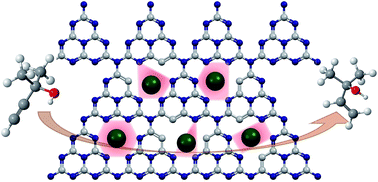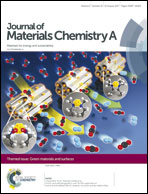Tailoring the framework composition of carbon nitride to improve the catalytic efficiency of the stabilised palladium atoms†
Abstract
Graphitic carbon nitride (g-C3N4) exhibits unique properties for the preparation of single-atom heterogeneous catalysts (SAHCs) due to the presence of sixfold nitrogen-based coordination sites in the lattice. Despite the potential to profoundly affect the metal stabilisation and resulting catalytic properties, no work has previously investigated the effect of modifying the carrier composition. Here, we study the impact of doping carbon in g-C3N4 on the interaction with palladium. This is achieved by introducing carbon-rich heterocycles (barbituric acid or 2,4,6-triaminopyrimidine) during the synthesis of bulk and mesoporous g-C3N4. Palladium is subsequently introduced via microwave-irradiation-assisted deposition, which emerges as a highly effective route for the dispersion of single atoms. Detailed characterisation confirms the controlled variation of the C/N ratio of the lattice and reveals the complex interplay with the crystal size, surface area, amount of defects, basic properties and thermal stability of the carrier. Atomic dispersions of palladium with similar surface densities could be obtained on both the stoichiometric and carbon-doped carriers in mesoporous form, but appreciable differences are observed in the ratio of Pd2+/Pd4+. The latter, which provides a measure of the degree of electron transfer from the metal to the carrier, is found to correlate with the activity in the continuous flow semi-hydrogenation of 2-methyl-3-butyn-2-ol. Density functional theory calculations support the decreased adsorption energy of palladium upon doping with carbon and reveal the potentially significant impact of oxygen-containing defects. The findings demonstrate the importance of understanding the metal-carrier interaction to optimise the catalytic efficiency of SAHCs.

- This article is part of the themed collections: International Year of the Periodic Table : Single Atoms as Active Catalysts and Green Materials and Surfaces


 Please wait while we load your content...
Please wait while we load your content...